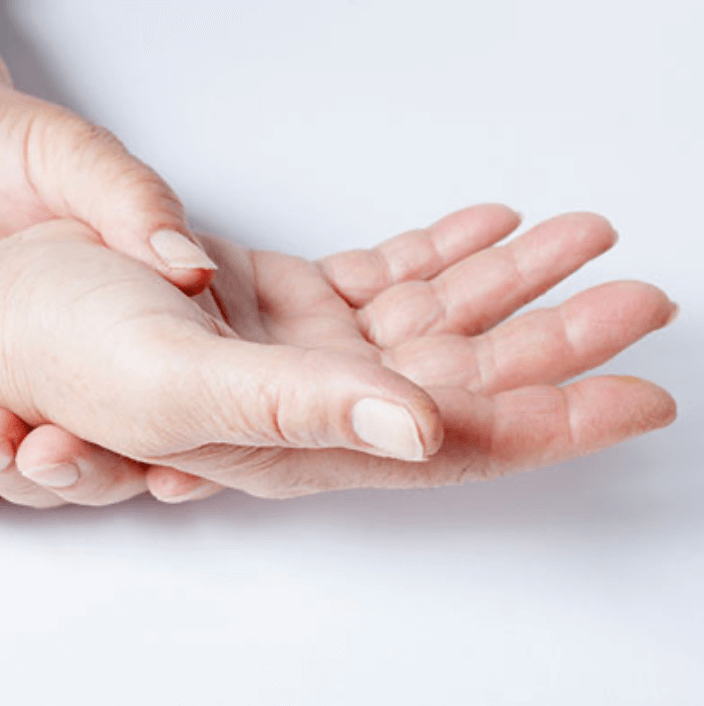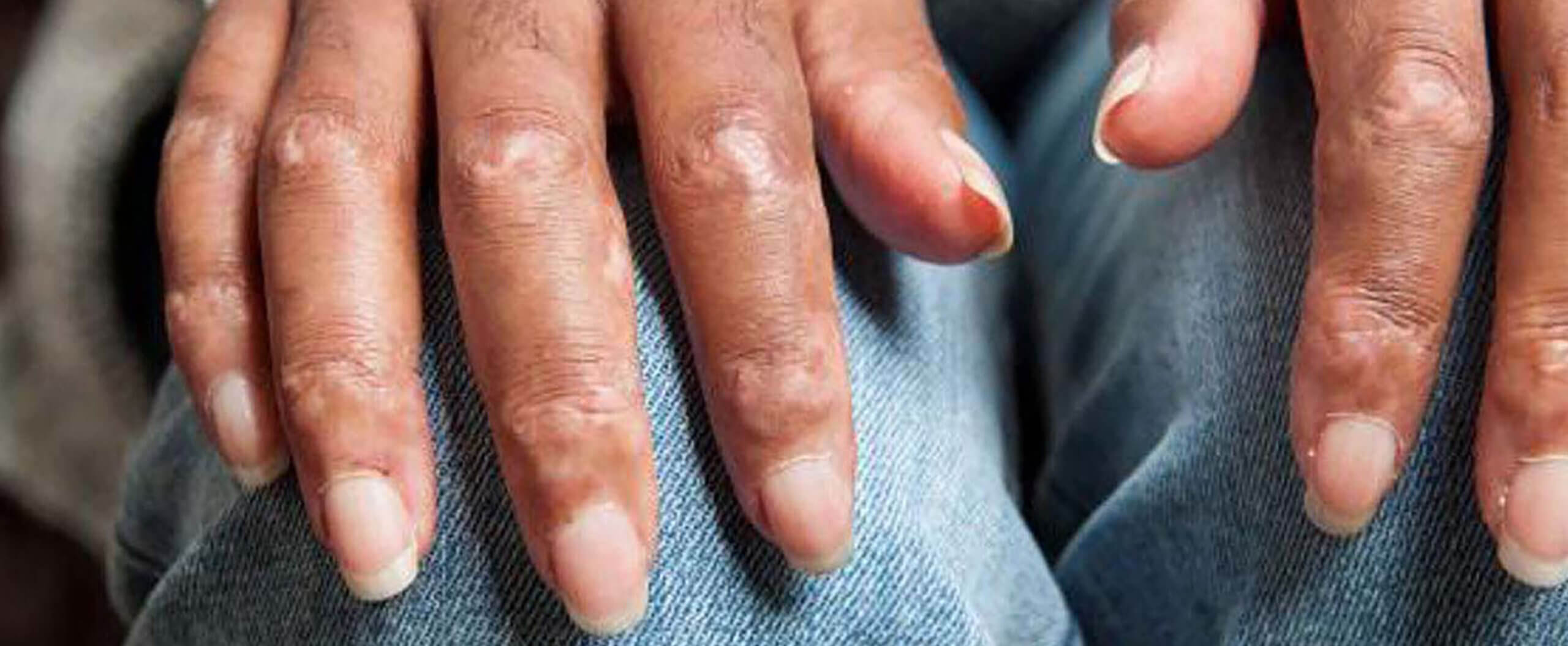Scleroderma
Scleroderma is a disease that involves the buildup of fibrous tissue in the skin and elsewhere in the body.
Scleroderma is a disease that involves the buildup of fibrous tissue in the skin and elsewhere in the body. It also damages the cells that line the walls of small arteries. This leads to tissue injury due to poor blood supply.
Scleroderma is a type of autoimmune disorder. In this condition, the immune system mistakenly attacks and damages healthy body tissue. The cause of scleroderma is unknown. A buildup of a substance called collagen in the skin and other organs leads to the symptoms of the disease.
Skin signs of scleroderma may include:
– Fingers or toes that turn blue or white in response to cold temperatures (Raynaud phenomenon)
– Stiffness and tightness of skin of fingers, hands, forearm, and face
– Hair loss
– Skin that is darker or lighter than normal
– Small white lumps of calcium beneath the skin that sometimes ooze a white substance that looks like toothpaste
– Sores (ulcers) on the fingertips or toes
– Tight and mask-like skin on the face
– Telangiectasias, which are small, widened blood vessels visible beneath the surface on the face or at the base of fingernails
Our dermatologists can prescribe medication and other treatments to control your symptoms and prevent complications.


Consultation
- Detailed history of your skin concern
- Total skin examination
- Holistic assessment of your health
- Diagnosis
- Discussion of treatment options
- Personalised treatment plan
- Treatment
FAQs
Scleroderma is a chronic connective tissue disease. Four to seven times as many women as men have it, and patients are frequently between ages 25 and 55, although it can occur in adults at any age. The most notable symptom is hardening of the skin, which usually begins on the hands (skin fibroblasts, the cells that help your tissue heal, produce too much collagen). While most patients only experience skin tightening on the hands, face, forearms, and calves—called limited disease—for about a third, the skin tightening spreads to the chest, the upper arms, and legs—called diffuse disease. The esophagus, heart, lungs, kidneys, digestive system, and skin can all be affected in both groups of patients, so a coordinated team approach is required.
See answer

Scleroderma can be difficult to diagnose because the symptoms resemble other diseases—symptoms across many autoimmune diseases are similar. The symptoms also vary from patient to patient. For instance, a patient might start off having constipation, diarrhea, or heartburn, but then they’ll become short of breath.
Scleroderma is a clinical diagnosis meaning that there is no laboratory or diagnostic test to confirm it. We take into account the patient’s history, laboratory tests, and diagnostic data, as well as a carefully performed physical examination.
See answer

We treat scleroderma as a chronic disease, much like doctors do for patients with diabetes and heart disease. For example, blood vessel spasm [from Raynaud’s phenomenon] is common in patients with scleroderma, and there are drugs that can be used to help the blood vessels relax.
Over-the-counter anti-inflammatory drugs and anti-reflux medications can help to reduce other symptoms while immune suppressant medications can help prevent disease progression in the lungs and in the heart. It’s important that patients with scleroderma have a specialist who can monitor them closely and manage their condition and any medications they are taking.
See answer



